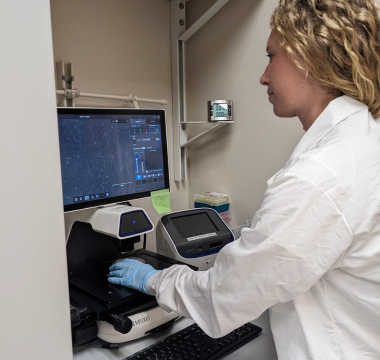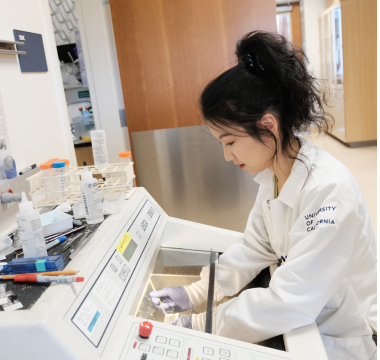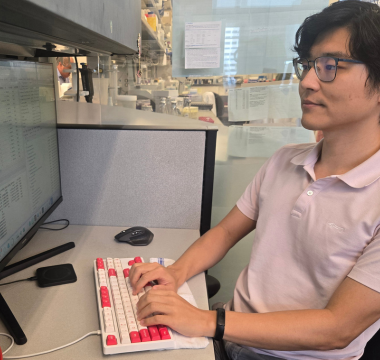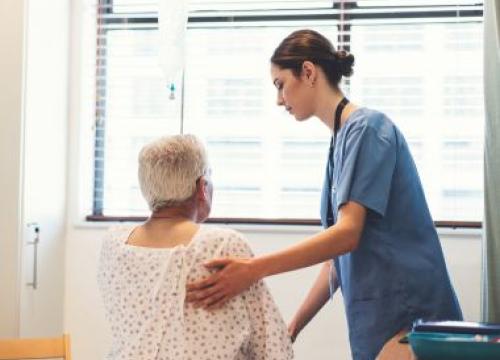Mainstay Parkinson's Medication Sometimes "Wears Off" Faster for Women

Levodopa, which helps with the movement symptoms of Parkinson’s, tends to work less well over time, especially for women.
Parkinson's disease (PD) is a condition that gets worse over time, impacting the nervous system. It's caused by the gradual death of brain cells that produce dopamine, a crucial chemical messenger for controlling movement. When these cells are lost and dopamine levels drop, people with Parkinson's begin to experience noticeable symptoms like shaking or tremors, muscle stiffness, a general slowness of movement and problems with balance.
A primary treatment for these movement symptoms is the drug levodopa. The body converts this medication into dopamine, helping to replenish the brain's supply. By doing so, levodopa can significantly reduce the physical challenges of the disease and improve a person's daily life.
However, for many individuals with Parkinson's, the effectiveness of levodopa can begin to diminish between doses. In other words, it starts "wearing off." Patients may notice their movement symptoms, such as tremors and stiffness, gradually returning before their next scheduled dose.

Parkinson’s also impacts men and women differently. Men are estimated to be 1.5 times more likely to develop Parkinson’s. Women with Parkinson's are often diagnosed at a later age and may have slightly different symptoms. These differences between men and women with Parkinson’s could be due to a variety of factors, including hormonal differences and genetics.
To better understand how these gender differences impact experience with levodopa, a recent study tracked 216 individuals with Parkinson's over a two-year period. The goal was to investigate whether men and women experience levodopa wearing off at different rates and to examine the symptoms that occur while on this medication.
Study Results
Participants included 139 men and 77 women with Parkinson’s who began taking levodopa for the first time at the start of the study. After two years in the study, almost 65% of women experienced symptom fluctuations, or times when the medication's effects seem to "wear off" before the next dose is due. This was compared to about 53% of men. This suggests that for many women, the medication was less effective in managing symptoms and did not feel as consistent over time.
In addition, more women in the study developed dyskinesia, a side effect of levodopa that leads to involuntary, uncontrolled movements. About 14% of women developed dyskinesia compared to only 5% of men. Taken together, these results suggest that there may be differences in how levodopa is processed in the body between men and women.
The study concluded that being female was the strongest predictor for both the wearing-off effect and dyskinesia after taking levodopa for two years. This indicates that gender is an important factor when considering how a person might respond to this medication.
Highlights
-
The study followed 139 men and 77 women with Parkinson’s for two years after they started taking levodopa for the first time.
-
During the two-year study period, 65% of women experienced times when the medication's effects seemed to "wear off" before the next dose. This was compared to about 53% of men.
-
During the study, about 14% of women developed dyskinesia, compared to only 5% of men.
-
The study concluded that female gender predicted the development of motor fluctuations and dyskinesia more than any other factor.
What does this mean?
Women’s experiences have been historically underrepresented in PD research. This study adds to increasing evidence that men and women often experience various aspects of PD differently, including in their response to the PD medication levodopa. Specifically, these results indicate that women may be more likely to have worse responses to levodopa treatment over time compared to men. However, the reasons for these differences between men and women are still unknown. Additionally, it is common for both men and women to have breakthrough symptoms on levodopa over time.
What do these findings mean to people with PD right now?
Knowing that men and women may react differently to prolonged levodopa treatment can help healthcare providers develop more effective treatment plans for patients. While more research needs to be done, the findings from this study suggest that more tailored, “gender-oriented” treatment recommendations may be needed. If you are struggling with symptoms related to levodopa treatment, talk to your doctor to discuss your treatment plan.
Learn More
The Parkinson’s Foundation believes in empowering the Parkinson’s community through education. Learn more about PD and the topics in this article through our below resources, or by calling our free Helpline at 1-800-4PD-INFO (1-800-473-4636) for answers to your Parkinson’s questions.
Related Materials
Related Blog Posts

Top Parkinson’s Science News Articles of 2025

Celebrating 12 Milestones that Defined 2025


















